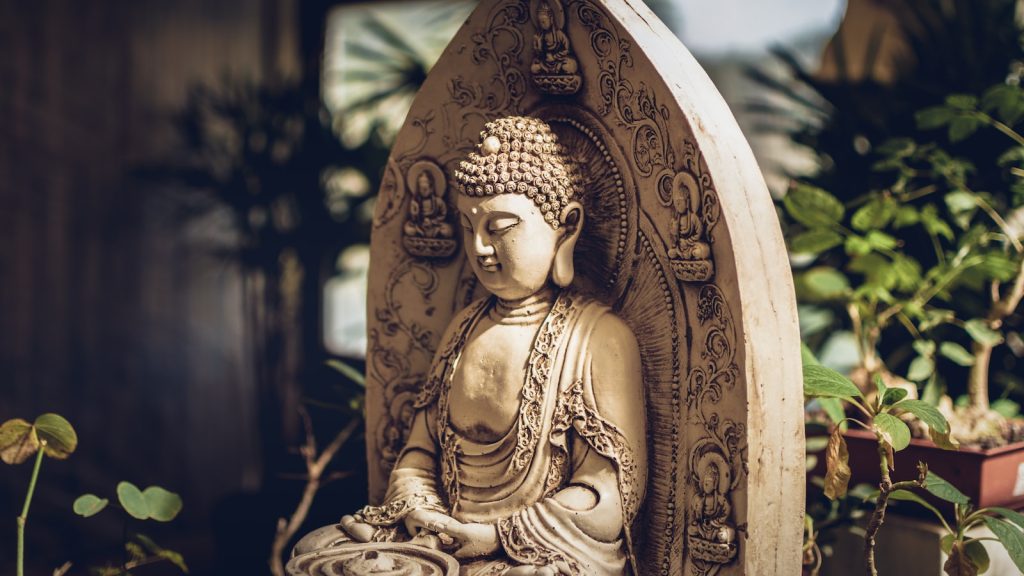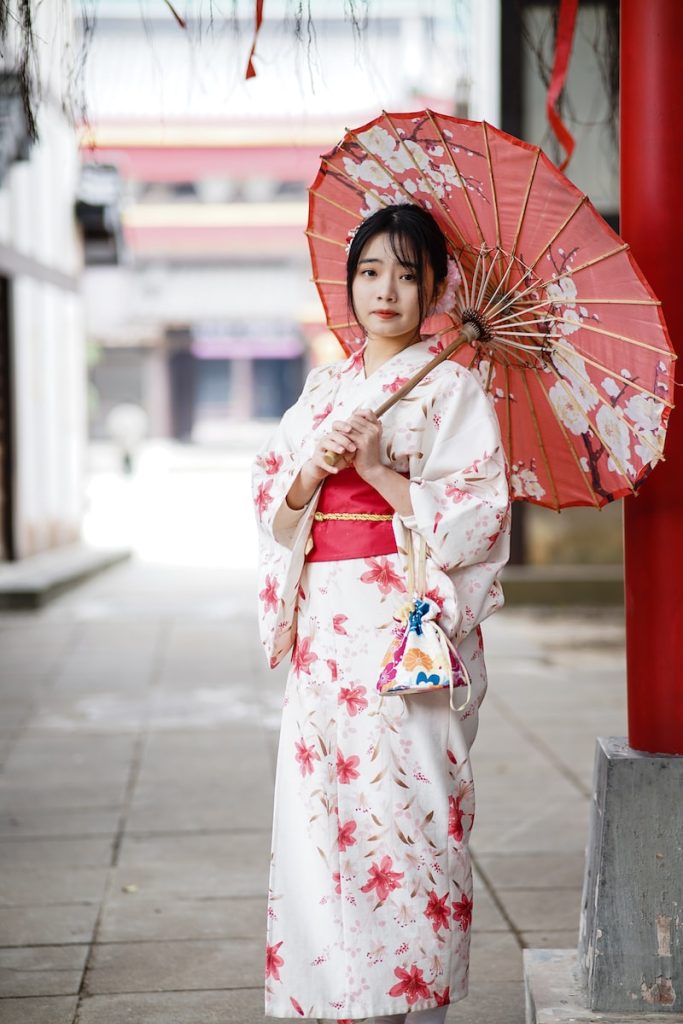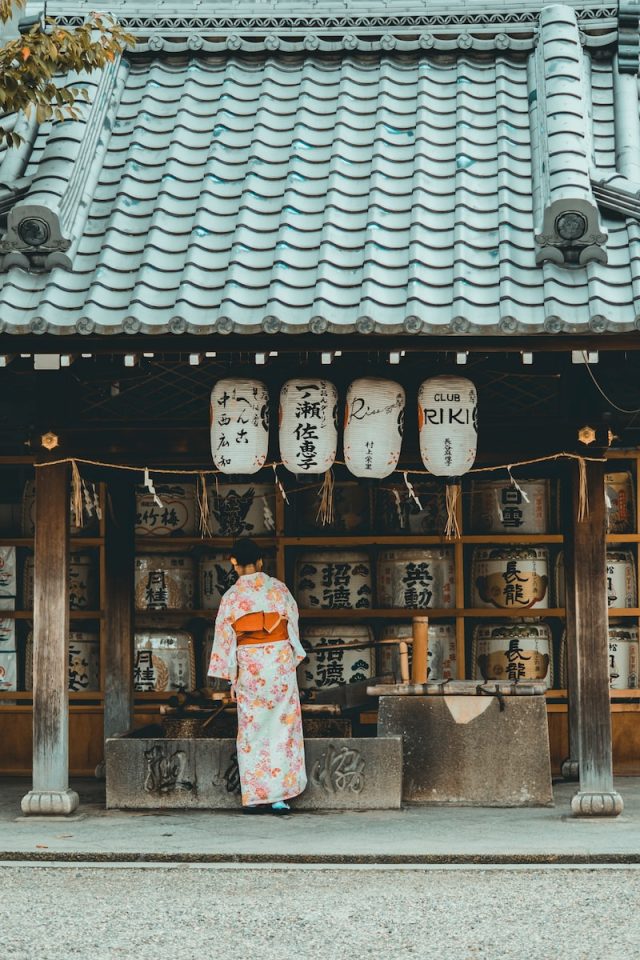For many travelers, the opportunity to experience new cultures is one of the most exciting aspects of traveling. And when it comes to immersing oneself in traditional culture, few destinations offer as much richness and depth as Japan. From the ancient art of tea ceremony to the intricate craft of origami, Japan is a treasure trove of traditional practices that have been passed down for generations. But what exactly does it mean to discover traditional Japanese culture through travel? In this blog, we’ll explore some of the key elements of Japanese culture and some of the best ways to experience them firsthand during your travels. Whether you’re planning a trip to Japan or simply curious about the country’s cultural heritage, read on to discover the wonders of traditional Japanese culture.
Geographical Context: Islands and Mountains
Japan is an island nation located in East Asia, consisting of four main islands: Honshu, Hokkaido, Kyushu, and Shikoku, as well as numerous smaller islands. Its geography is dominated by mountains covering over 70% of the country’s land area.
The Japanese archipelago is situated in a volcanic zone along the Pacific Ring of Fire, creating a diverse landscape with many active volcanoes and hot springs. The highest peak in Japan is Mount Fuji, which stands at 3,776 meters and is located on Honshu Island. Mount Fuji is an iconic symbol of Japan and attracts thousands of visitors yearly who hike and admire its stunning beauty.
Apart from Mount Fuji, other notable mountains in Japan include the Japan Alps, located in central Honshu and a popular destination for hiking and skiing. The Northern Japan Alps, Southern Japan Alps, and the Hida Mountains are three sub-ranges that make up the Japan Alps.
Japan’s islands also have unique geographical features, each offering its distinct culture and history. Hokkaido, the northernmost island, is known for its harsh winters and vast wilderness areas, while Okinawa, in the southernmost region of Japan, has a subtropical climate and unique culture.
The geography of Japan has also influenced its culture, with many traditional activities and customs closely tied to the mountains and islands. For example, the Japanese art of bonsai, which involves growing miniature trees in containers, was developed to bring nature’s beauty indoors. At the same time, the hot springs or onsen, which are scattered throughout the country, offer a way to relax and rejuvenate in natural surroundings.
Overall, the islands and mountains of Japan provide a unique and diverse landscape that has shaped the country’s culture and history. Whether exploring the natural beauty of Mount Fuji, skiing in the Japanese Alps, or soaking in a hot spring, there is something for everyone to enjoy in Japan’s stunning geography.
Religion: Shinto and Buddhism

Shinto and Buddhism are the two major religions of Japan. While both have distinct beliefs and practices, they have coexisted and influenced each other for centuries, creating a unique religious landscape in Japan.
Shinto, which means “the way of the gods,” is an indigenous religion of Japan that centers around the worship of various kami, or spirits, that are believed to inhabit natural objects and phenomena such as mountains, rivers, trees, and even people. Shinto beliefs emphasize purity, harmony with nature, and gratitude for blessings. Shinto practices include visiting shrines, making offerings, participating in festivals, and performing purification rituals.
Conversely, Buddhism was introduced to Japan from China and Korea in the 6th century. It is based on the teachings of Siddhartha Gautama, also known as the Buddha, and emphasizes the Four Noble Truths, the Eightfold Path, and the concept of karma. Buddhism in Japan has been influenced by different schools and sects, such as Zen, Pure Land, and Nichiren, each with its own practices and beliefs.
Despite the differences between the two religions, Shinto and Buddhism have coexisted in Japan for centuries and have even blended in some ways. Many Japanese people practice both religions simultaneously, incorporating Shinto rituals into Buddhist ceremonies and vice versa. For example, many Japanese weddings take place in Shinto shrines, while funerals are typically conducted in Buddhist temples.
In addition to their religious significance, Shinto shrines, and Buddhist temples are also popular tourist attractions in Japan. Visitors can admire the beautiful architecture and artwork, participate in rituals and ceremonies, and learn more about the history and culture of Japan.
Shinto and Buddhism are integral parts of Japanese culture and have profoundly impacted the country’s history, art, and philosophy. Whether you’re a religious pilgrim or a curious traveler, exploring these two religions can be a fascinating and enriching experience.
Food: Ramen, Sushi, Sake
Food is an essential aspect of Japanese culture, and three of its most iconic culinary exports are ramen, sushi, and sake.
Ramen is a popular noodle soup dish originating in China but has since become a beloved comfort food in Japan. Ramen consists of wheat noodles served in a savory broth with various toppings such as pork, chicken, seafood, vegetables, and egg. Japan has many regional variations of ramen, each with its unique style and flavor. Ramen restaurants, or ramen-ya, can be found all over Japan, from street food stalls to high-end establishments.
Sushi is another Japanese dish that has gained worldwide popularity. It is a dish that consists of vinegared rice topped with various ingredients, such as raw fish, seafood, or vegetables and is often served in small pieces, known as nigiri, or rolled into a seaweed wrap, known as maki. The key to good sushi is the quality and freshness of the ingredients, which can be sourced from different regions of Japan and even around the world. Sushi restaurants can range from small sushi-ya run by a single chef to large chains.
Sake is a traditional Japanese alcoholic beverage that is made from fermented rice. It is often served in small cups and can be enjoyed warm or cold, depending on the type of sake. Sake is an important part of Japanese culture and is often served during special occasions, such as weddings and festivals. There are many types of sake, each with its flavor profile and brewing method. Visitors to Japan can enjoy sake-tasting experiences and visit breweries to learn more about the production process.
Ramen, sushi, and sake are three of Japan’s most famous and beloved culinary offerings. Each has its own unique history, preparation, and presentation, and all are deeply ingrained in Japanese culture. Whether you’re a foodie or simply interested in experiencing Japanese culture, these three delicacies are a must-try when visiting Japan.
Art: Origami, Ukiyo-e Prints

Art is an integral part of Japanese culture, and two of its most iconic art forms are origami and ukiyo-e prints.
Origami is the Japanese art of paper folding, which involves creating intricate designs and shapes from a single sheet of paper. It can range from simple designs, such as a paper crane, to complex creations, such as a life-size elephant or a modular cube. This art form has a long history in Japan and is often associated with the concept of wabi-sabi, which values simplicity, imperfection, and the beauty of nature. Origami is a form of artistic expression, a popular pastime, and educational tool. Check our article on origami
Ukiyo-e prints are a type of woodblock print that flourished in Japan during the Edo period (1603-1868). These prints depict scenes from everyday life, such as landscapes, portraits, and historical events, and often incorporate elements of Japanese mythology and folklore. They were produced in large quantities and were affordable for the general public, making them a popular form of art and entertainment. Famous ukiyo-e artists include Hokusai and Hiroshige, whose prints are still popular today.
Both origami and ukiyo-e prints have profoundly impacted Japanese culture and have gained worldwide recognition for their beauty and uniqueness. Visitors to Japan can attend workshops to learn origami techniques, visit museums and galleries to see ukiyo-e prints, and even purchase origami paper and ukiyo-e prints as souvenirs. These art forms are a testament to Japan’s artistic heritage and a reminder of the country’s creativity, innovation, and cultural identity.
Music & Performances: Taiko, Kabuki Theater
Music and performances are a significant part of Japanese culture, and two of the most distinctive forms are Taiko and Kabuki Theater.
Taiko is a traditional Japanese percussion instrument made of a large barrel-shaped drum with two drumsticks called bachi. Taiko performances involve a group of drummers playing synchronized, powerful, and mesmerizing rhythms. The origins of taiko can be traced back to ancient religious rituals and festivals, but it has since evolved into a modern form of music and dance. Taiko performances are often accompanied by other traditional instruments, such as the shamisen and shakuhachi, and are known for their high-energy, dynamic performances.
Kabuki Theater is a form of Japanese theater that dates back to the early 17th century. It involves elaborate costumes, makeup, and exaggerated movements to tell stories from Japanese history, folklore, and mythology. Only male actors initially performed in Kabuki Theater, but women have also begun to take on Kabuki roles in recent years. The theater has a unique style of acting, singing, and dancing that is both highly stylized and precise. Kabuki performances are popular for locals and tourists, ranging from traditional performances to modern interpretations.
Taiko and Kabuki Theater are essential parts of Japanese culture and are deeply rooted in the country’s history and traditions. Visitors to Japan can attend taiko performances and even participate in workshops to learn how to play the drums. Kabuki performances are also popular, with many theaters offering English subtitles to make them more accessible to non-Japanese speakers. These music and theater forms are entertaining and provide a unique insight into Japanese culture and the country’s artistic heritage.
Clothing: Kimono Styles

Japanese culture is renowned for its distinctive clothing styles, with one of the most iconic garments being the kimono. The kimono is a traditional Japanese garment worn for centuries and is still popular today for formal occasions and traditional events. There are many different types of kimono styles, each with its own unique design and purpose.
Kimono styles
- Furisode: A formal kimono worn by young, unmarried women for special occasions such as coming-of-age ceremonies and weddings. Furisode kimonos are distinguished by their long sleeves, measuring up to 114 centimeters.
- Komon: A casual kimono that is suitable for everyday wear. Komon kimonos are often adorned with small, repeated patterns and can be worn by both men and women.
- Tomesode: A formal kimono married women wear for special occasions such as weddings and receptions. Tomesode kimonos are distinguished by their shorter sleeves and intricate designs along the bottom hem.
- Yukata: A casual summer kimono made from lightweight cotton or linen. Yukata kimonos are often worn to summer festivals and outdoor events and are typically more affordable than other kimono styles.
- Uchikake: A formal kimono worn by brides for their wedding ceremonies. Uchikake kimonos are heavily embroidered, adorned with gold thread, and can weigh up to 10 kilograms.
Kimono styles are not just limited to these examples, there are many variations and styles to choose from. In recent years, the kimono has also been adapted into modern fashion, with designers creating contemporary versions that are more versatile and wearable in everyday life. In Japan, it is common to see people wearing kimonos for special events and traditional occasions. Visitors to Japan can also rent or purchase a kimono to experience wearing this iconic garment and even participate in traditional Japanese tea ceremonies and other cultural activities while wearing one. The kimono is not only a representation of Japanese fashion and culture but also a symbol of the country’s rich history and traditions.
Conclusion: Experiencing Japan
Japan is a country that offers a unique and rich cultural experience for visitors from all over the world. From the delicious cuisine to the stunning art and architecture, Japan always has something new and exciting to discover.
One of the best ways to truly immerse oneself in Japanese culture is through travel. Whether it is exploring the bustling streets of Tokyo, hiking in the Japan Alps, or visiting traditional temples and shrines, there are countless opportunities to experience the beauty and diversity of this fascinating country.
Visitors can gain a deeper understanding and appreciation of Japan’s rich history and culture by trying traditional foods, attending cultural festivals, participating in traditional activities like tea ceremonies, and wearing a kimono.
Japan’s geography, with its majestic mountains and scenic islands, also provides a unique backdrop for exploring and experiencing the country. Whether admiring Mount Fuji’s beauty or relaxing in a hot spring, Japan’s natural wonders offer visitors a chance to connect with nature and recharge their spirits.
Overall, experiencing Japan is a journey that is both fulfilling and enlightening. With its rich cultural heritage, stunning natural beauty, and welcoming people, Japan is a must-visit destination for anyone seeking a unique and unforgettable travel experience.






























